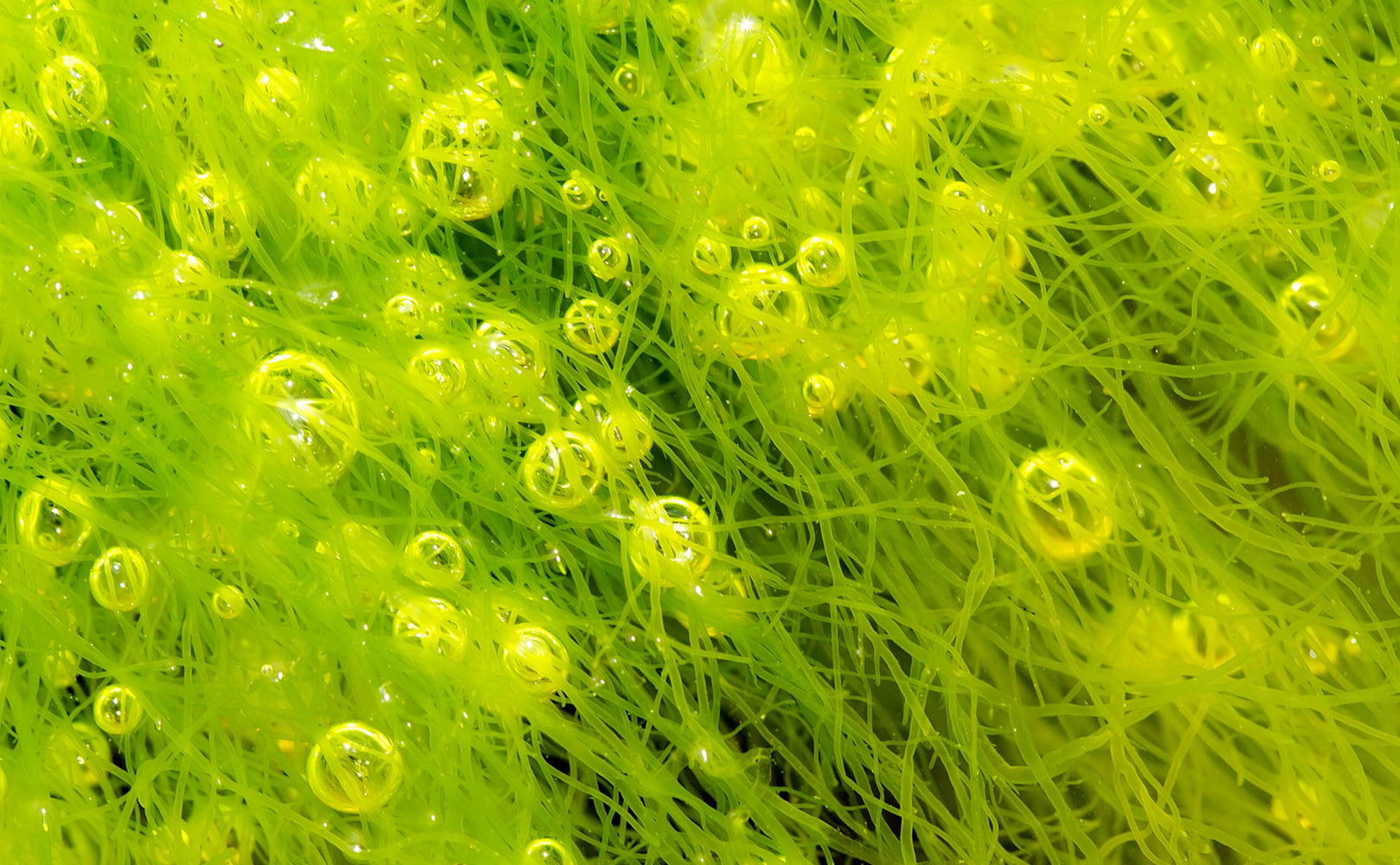Solved: Algae in Whole House Water Filter
Written by: Gene Fitzgerald // Last Updated: May 12, 2023
This page may contain affiliate links. If you buy a product or service through such a link we earn a commission at no extra cost to you. Learn more.
Algae in water is not an uncommon problem for whole house filters. While it’s not the most problematic contaminant, it still gives water a strange feel. Not to mention that it can be harmful with increased exposure.
If you are unsure how to deal with algae in your whole house water filter system, you’ve come to the right place.
This guide will teach why algae grow in whole house filter system, what to do about it, and how to prevent it from happening in the future.
Key Takeaways
In order to rid a whole house water filter of algae:
- Take the system apart removing housings and filter cartridges.
- Wash the housings thoroughly with a dishwashing detergent. Rinse thoroughly afterward.
- Do NOT use detergent on the cartridges. Rinse them under flowing water instead. If that doesn’t help, replace them.
- Reassemble your whole house water filter.
- To prevent future algae growth, keep your filter system away from windows and direct sunlight, and clean it regularly.
- Consider adding UV treatment to your filtering process to kill any algae spores.
Why a Whole House Water Filter Grows Algae
Algae is a naturally occurring phenomenon, and it grows in many forms. Generally, algae grow through photosynthesis, meaning they thrive in environments with sunlight and warm temperatures.
Ironically, most water filtering processes help algae grow rather than hinder them. Why? When you filter water, you remove chemicals and disinfectants that would normally eliminate algae, like chlorine. Also, the filtered water in your tank has the conditions algae want for growth, such as minimal turbidity.
One exception is UV water treatment systems. These kill any microorganisms that lead to algae, among others.
Where Does the Algae Come from?
Algae is practically everywhere and only needs two things to grow: Sunlight and water. Algae can and will eventually grow if your water filter system is exposed to sunlight, even from a window.
This process will accelerate significantly if you draw water from a source that already has algae in it, such as well water or water from a lake.
If your main water line comes from the city, it’s probably already treated with chlorine. However, algae can still grow after your filtering process since it most likely eliminates said chlorine.
What to Do About It
If you have algae in your whole house water filter, there’s no need to panic. All you have to do is clean it. However, this is most likely only a temporary measure as algae will eventually grow again. You should also consider a more permanent solution once your filter is clean (more below).
How to Clean a Whole House Water Filter from Algae
To clean a whole house filter from algae, follow these steps:
- Take apart the system removing housings and filter cartridges.
- Wash the housings thoroughly with a dishwashing detergent to kill and remove algae spores. Rinse thoroughly afterward.
- Do not use detergents on the cartridges. Rinse them under flowing water instead. If that doesn’t help, it’s better to dispose of the old filters and install new ones.
- Reassemble your whole house water filter after everything has dried.
How Do I Prevent Algae in My Whole House Water Filter in the Future?
You have a few options to prevent algae from growing in the future. Remember: The most important factors for algae growth are warm temperature and sunlight. If possible, keep your filter system in a cool and dark place, away from windows and sunlight.
You could also cover your system or windows with a material that doesn’t let sunlight through or paint it with an opaque color like black or gold.
Cleaning your water tank every six months is also a good idea, though the exact timeframe will depend on how prevalent your algae problem is.
Alternatively, you could add UV treatment to your filtering process to kill algae.
Temperature in Filter Location Matters
Algae thrive in warm temperatures. The optimal temperature range for algae growth is between 68 °F and 86°F (20 °C to 30 °C). If possible, make sure your system is in a place with a lower temperature.
Why Does My Well Water Have Algae?
Well water is particularly prone to forming algae. The factors that affect algae growth are:
- Nutrients: Nitrogen and phosphorus boost the growth of algae. These nutrients can frequently be found in excess in wells, particularly if you live near agricultural areas.
- Light: As we’ve mentioned before, algae need sunlight to grow. Depending on your well’s location, it could be exposed to sunlight.
- Temperature: Algae grows more easily in warmer temperatures.
- Stable conditions: Algae prefers minimal turbulence, making still water in wells perfect.
- High pH levels: Alkaline water also foments the growth of algae.
- Turbidity: Algae prefers water with low turbidity as particles in the water can block sunlight.
A few of these factors would already present a good environment for algae to grow, but it’s common to find a combination of several of these in well water.
How to Keep Algae Out of Well Water
The only way to keep algae from forming in well water the first place is by treating it – think shock chlorination.
Also, you can add a filter system that kills algae on its own, but it won’t prevent it from growing inside the well and only deal with it afterwards.
Lastly, if you have a way to tackle the factors that help algae grow in your well, as outlined above, you can help reduce its ability to grow.
Can You Filter Algae Out of Well Water?
There are a few ways you can remove algae from your well:
- Use a pump to purge your well, at least three well volumes.
Alternatively, you can shock your well:
- Add an appropriate amount of chlorine bleach to your well, depending on its diameter and depth. You can follow the CDC guidelines for using chlorine on well water.
- Use a clean hose to run water into the well, making sure to circulate it around.
- Rinse the casing of the well for at least 10 minutes to remove traces of chlorine from inside the casing.
- Turn on the faucets inside your home and run the water until you smell the chlorine.
- Turn off the faucets and let the chlorine solution work for at least 12 hours.
- Drain the chlorinated water from the well.
- Turn the faucets on inside the home and drain any remaining chlorine traces.
- If you don’t have a filter system that removes chlorine, boil your water for at least 1 minute for the first few days before drinking it.
Safety Considerations: Can Algae in Drinking Water Make You Sick?
Some algae are harmful to people and animals, and some can produce toxins that can seriously ill you. Water affected by blue-green algae can cause skin irritation, mild respiratory issues, and hay fever-like symptoms.
Blue-green algae also produce harmful toxins, which can cause symptoms like vomiting, diarrhea, fever, and headaches when ingested.
If you have any questions about algae in whole house water filters please don’t hesitate to leave a comment below!
Information provided on BOS is for educational purposes only. The products and services we review may not be right for your individual circumstances.
We adhere to strict editorial guidelines. Rest assured, the opinions expressed have not been provided, reviewed, or otherwise endorsed by our partners – they are unbiased, independent, and the author’s alone. Our licensed experts fact-check all content for accuracy. It is accurate as of the date posted and to the best of our knowledge.



